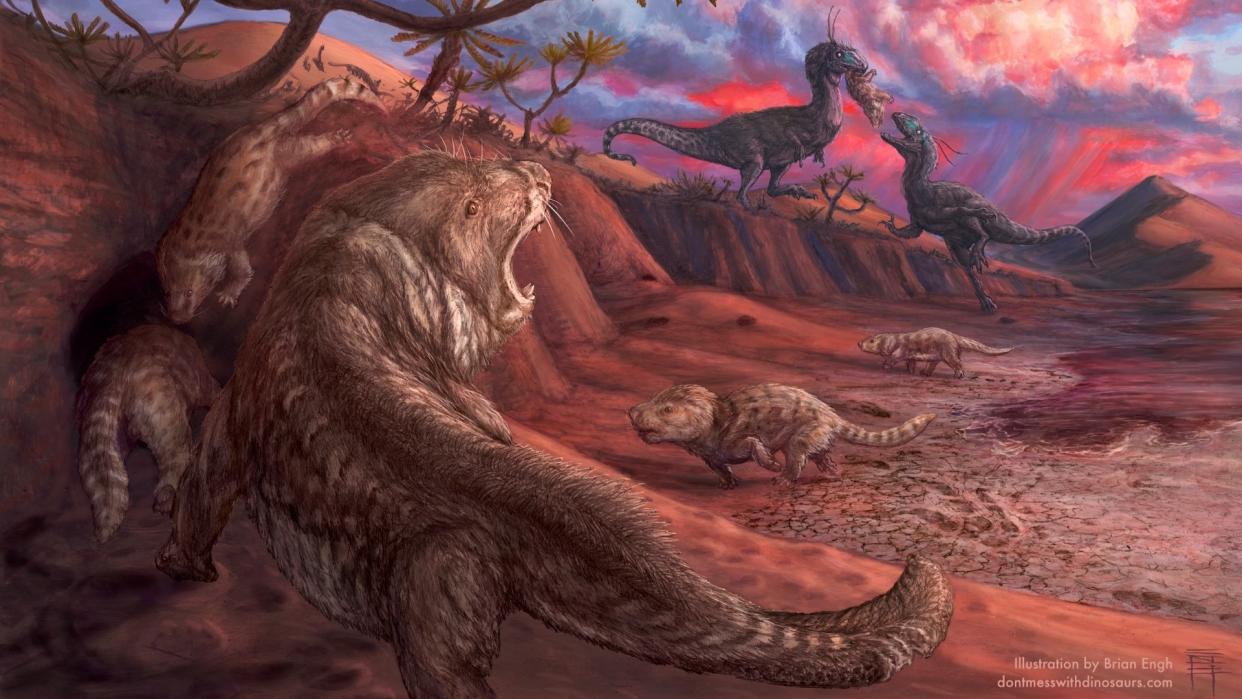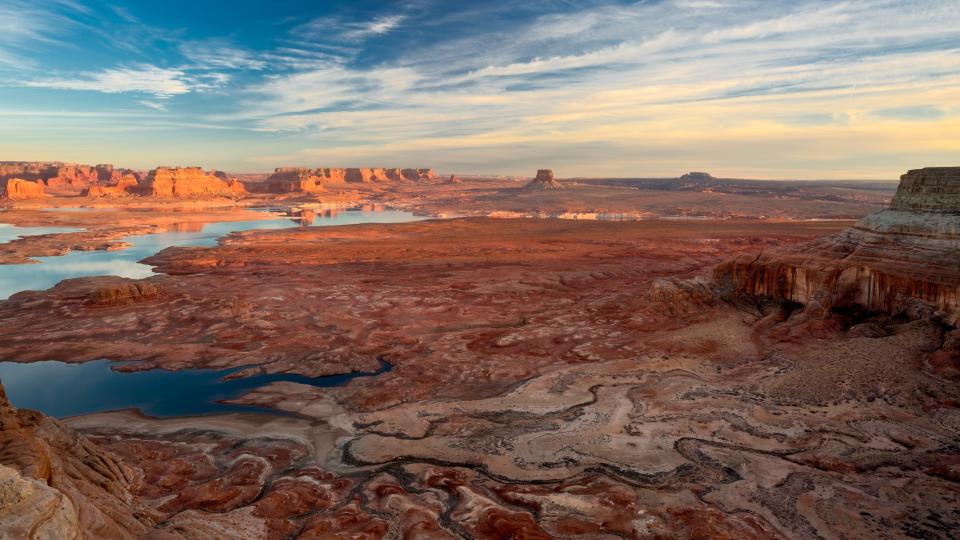Low water levels in Lake Powell reveal 'extremely rare' fossils from extinct Jurassic mammal relative


Lake Powell's fluctuating shoreline has revealed "extremely rare" fossils belonging to a long-extinct mammal relative that roamed North America 180 million years ago, National Park Service (NPS) officials announced last week.
Researchers discovered the bones earlier this year in the Glen Canyon National Recreation Area (NRA) in southern Utah while documenting fossilized tracks. The site is usually submerged and was only accessible for a short period of time before snowmelt in the summer months replenished the lake.
The bones are the first tritylodontid fossils found in the Navajo Sandstone, a geologic formation of thick layers of sandstone that were formed in a vast ancient desert of sand dunes in what is now known as the Glen Canyon Group.
Tritylodontids are a group of near-mammalian reptiles that lived during the Triassic (251.9 million to 201.3 million years ago) and Jurassic (201.3 million to 145 million years ago) periods. These warm-blooded, herbivorous creatures likely co-exited with early mammals for millions of years and survived a mass extinction event at the end of the Triassic. Different species of tritylodontids ranged in size from rat-sized to wolf-sized.
Related: 'Truly gigantic' Jurassic sea monster remains discovered by chance in museum
"These extremely rare fossils are one of the most important fossil vertebrate discoveries in the United States this year," NPS officials said in a statement.

The paleontologists who found the bones were "in the right place at the right time," the statement said. They only had 120 days to recover the fossils before water levels once again increased. They collected hundreds of pounds of rock that encased bones and skeletons, which will be scanned and analyzed before joining the collections of the Prehistoric Museum in Price, Utah.
RELATED STORIES
—'Fleeing vampire' haunted Jurassic oceans with glow-in-the-dark organs, fossil reveals
—Mysterious 'golden' fossils from the Jurassic aren’t what they seem
—'Never seen anything like it': Impeccably preserved Jurassic fish fossils found on UK farm
"Studying these fossils will help paleontologists learn more about how early mammal relatives survived the mass extinction at the end of the Triassic Period and diversified through the Jurassic Period," the statement said.
According to the statement, paleontologists also discovered a rare bone bed in the slightly older Kayenta Formation, which sits roughly 60 miles (100 kilometers) southeast of the Glen Canyon NRA, but no further details were given about this discovery.
In July, dropping water levels in Texas' Paluxy River revealed 70 dinosaur tracks, including one of the longest dinosaur tracks in the world, at Dinosaur Valley State Park.

